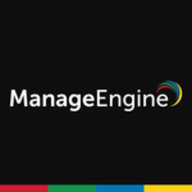

ManageEngine OpManager and Meraki Dashboard compete in the network management category. Meraki Dashboard seems to have the upper hand due to its user-friendly cloud management capabilities and interface.
Features: ManageEngine OpManager offers Network Device Monitoring, Switch Configuration, and real-time alerts. Its automation and reporting tools are versatile. Meraki Dashboard is known for its ease of use, cloud management capabilities, and a single pane of glass interface providing network-wide visibility.
Room for Improvement: ManageEngine OpManager's complex backup solutions, inconsistent UI updates, and slow technical support need improvement. Product documentation is also lacking. Meraki Dashboard requires better user-friendliness in configuration settings, enhanced licensing management, and improved integration with external platforms.
Ease of Deployment and Customer Service: ManageEngine OpManager is primarily for on-premises deployment, creating challenges in diverse IT environments. Its technical support is responsive but lacks local expertise. Meraki Dashboard supports hybrid and public cloud environments with great technical support, though basic configuration assistance is limited.
Pricing and ROI: ManageEngine OpManager offers competitive pricing and significant savings compared to competitors like SolarWinds, providing a good ROI due to its cost-effectiveness. Meraki Dashboard is more expensive, but its user experience and cloud-based versatility justify the cost, with licensing often including comprehensive support.
However, from a sales perspective, it's very challenging for the initial sale, and even renewals are tough when it comes to the price point.
I would recommend a rating of ten out of ten for support.
More support is needed, especially on weekends.
I would give nine points out of ten for ManageEngine OpManager's technical support.
The support response time can be slow, sometimes taking up to fifteen hours.
When our site went down, Cisco's technical support was very responsive and effective, so I would rate them nine out of ten for their support.
They are instantly available for technical support from Meraki Dashboard.
Scalability is needed more in automation and AI functionalities.
We have not encountered any downtime related to the Meraki cloud feature in the last five years.
If identifying the interface was easier, it would take less time to configure.
There is a call for ManageEngine OpManager to scale better in automation and AI functionality.
Improving the after-sales support and learning materials for local engineers and partners to enhance their capacities and expertise.
There is a need for price reductions in developing countries, as the cost of Meraki is quite high.
The cameras are not connected through Meraki, but all other devices are on Meraki networks.
It provides many insights out of the box without any need to search for them.
Pricing for ManageEngine OpManager is good and negotiable with the distributor;
The cost is quite high-end for ManageEngine OpManager, especially in our very price-sensitive market here in Sri Lanka.
The cost of the Meraki solution is high, which may not be affordable for smaller companies, especially in developing countries.
If we involve a third-party vendor, the price will definitely go up.
The automated reporting back, which includes identifying the top list and trends, as well as session monitoring from the end user to server through routers and firewalls, provides exact issue notifications for network problems.
The biggest benefit of ManageEngine OpManager for our customers is centrally managing the users and assets of an organization, along with link management, bandwidth management, and similar functionalities.
Managing platforms and network device virtualization on one platform is beneficial.
Meraki Dashboard offers an exceptional centralized management solution that allows easy updates and monitoring of various network features, including bandwidth usage and content filtering.
The most valuable feature for me is the cloud dashboard.
It summarizes everything in one place, which is very important for our organization.
| Product | Market Share (%) |
|---|---|
| ManageEngine OpManager | 1.5% |
| Meraki Dashboard | 1.1% |
| Other | 97.4% |


| Company Size | Count |
|---|---|
| Small Business | 16 |
| Midsize Enterprise | 15 |
| Large Enterprise | 27 |
| Company Size | Count |
|---|---|
| Small Business | 22 |
| Midsize Enterprise | 13 |
| Large Enterprise | 25 |
ManageEngine OpManager is a network, server, and virtualization monitoring software that helps SMEs, large enterprises and service providers manage their data centers and IT infrastructure efficiently and cost effectively. Automated workflows, intelligent alerting engines, configurable discovery rules, and extendable templates enable IT teams to setup a 24x7 monitoring system within hours of installation.
Meraki Dashboard is a comprehensive cloud-based platform that offers centralized management and control for all Meraki networking and security products. It provides a user-friendly interface, allowing administrators to easily monitor and configure their network infrastructure from anywhere. With real-time visibility, troubleshooting becomes effortless, ensuring optimal performance and minimizing downtime.
The intuitive dashboard offers a holistic view of the network, enabling quick identification of potential issues and proactive measures. It simplifies network deployment and scaling, with zero-touch provisioning and automatic firmware updates. The robust security features include advanced threat protection, content filtering, and VPN connectivity.
Meraki Dashboard also offers powerful analytics and reporting capabilities, providing valuable insights into network usage, application performance, and user behavior. With its seamless integration and scalability,
Meraki Dashboard is the ideal solution for organizations of all sizes, ensuring efficient network management and enhanced productivity.
We monitor all Network Monitoring Software reviews to prevent fraudulent reviews and keep review quality high. We do not post reviews by company employees or direct competitors. We validate each review for authenticity via cross-reference with LinkedIn, and personal follow-up with the reviewer when necessary.